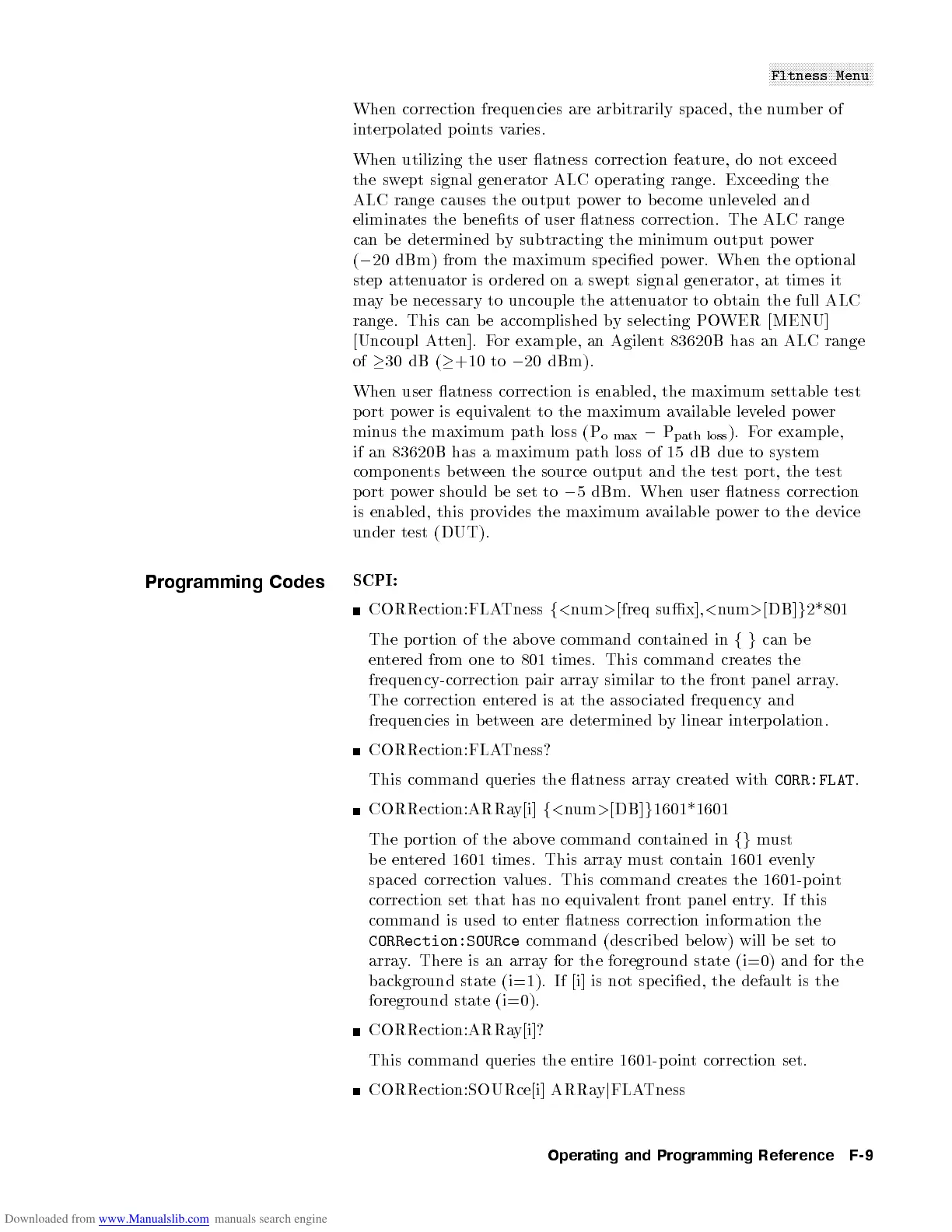NNNNNNNNNNNNNNNNNNNNNNNNNNNNNNNNNNN
Fltness Menu
When correction frequencies are arbitrarily spaced, the number of
interpolated points varies.
When utilizing the user atness correction feature, do not exceed
the swept signal generator ALC operating range. Exceeding the
ALC range causes the output p ower to become unleveled and
eliminates the b enets of user atness correction. The ALC range
can be determined by subtracting the minimum output power
(
0
20 dBm) from the maximum specied p ower. When the optional
step attenuator is ordered on a swept signal generator, at times it
may be necessary to uncouple the attenuator to obtain the full ALC
range. This can b e accomplished by selecting POWER [MENU]
[Uncoupl Atten]. For example, an Agilent 83620B has an ALC range
of
30 dB (
+10 to
0
20 dBm).
When user atness correction is enabled, the maximum settable test
port p ower is equivalent to the maximum available leveled power
minus the maximum path loss (P
o max
0
P
path loss
). For example,
if an 83620B has a maximum path loss of 15 dB due to system
components between the source output and the test port, the test
port p ower should b e set to
0
5 dBm. When user atness correction
is enabled, this provides the maximum available power to the device
under test (DUT).
Programming Codes
SCPI:
CORRection:FLATness
f
<
num
>
[freq sux],
<
num
>
[DB]
g
2*801
The portion of the ab ove command contained in
fg
can be
entered from one to 801 times. This command creates the
frequency-correction pair array similar to the front panel array.
The correction entered is at the asso ciated frequency and
frequencies in b etween are determined by linear interpolation.
CORRection:FLATness?
This command queries the atness array created with
CORR:FLAT
.
CORRection:ARRay[i]
f
<
num
>
[DB]
g
1601*1601
The portion of the ab ove command contained in
fg
must
be entered 1601 times. This array must contain 1601 evenly
spaced correction values. This command creates the 1601-p oint
correction set that has no equivalent front panel entry. If this
command is used to enter atness correction information the
CORRection:SOURce
command (describ ed below) will be set to
array. There is an array for the foreground state (i=0) and for the
background state (i=1). If [i] is not sp ecied, the default is the
foreground state (i=0).
CORRection:ARRay[i]?
This command queries the entire 1601-p oint correction set.
CORRection:SOURce[i] ARRay
j
FLATness
Operating and Programming Reference F-9
